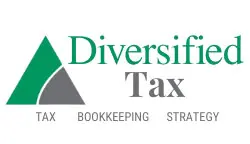What is a Zero Balance Account (ZBA)?
What is a Zero Balance Account (ZBA)?
In the dynamic world of personal and business finance, managing cash flow and maintaining a healthy financial standing are paramount concerns. One financial instrument that has gained significant traction in recent years is the zero balance account. This innovative banking solution offers a differentiated approach to cash management, providing individuals and organizations with a versatile tool to help optimize their financial resources.
In this extensive guide, we will delve into the intricacies of zero balance accounts, exploring their definition, key features, benefits, and practical applications. By the end of this article, you will have a thorough understanding of this financial instrument and how it can be leveraged to help streamline your financial operations.
Understanding Zero Balance Accounts
A zero balance account, also known as a ZBA or a sweep account, is a specialized type of bank account designed to manage cash flow efficiently. Unlike traditional checking or savings accounts, a zero balance account is characterized by its ability to maintain a constant, predetermined balance, typically set at zero or a nominal amount.
At the heart of a zero balance account lies an automated cash management system. This system constantly monitors the account’s balance and automatically transfers any excess funds to a designated account, such as a savings account or a master account. Conversely, if the balance falls below the predetermined level, the system will automatically transfer funds from the designated account to maintain the desired balance.
Key Features of Zero Balance Accounts
- Constant Balance Maintenance: The primary feature of a zero balance account is its ability to maintain a constant, predetermined balance, typically set at zero or a nominal amount. This balance is actively managed through automated fund transfers.
- Automated Cash Transfers: The zero balance account is integrated with an automated cash management system that constantly monitors the account’s balance and initiates the necessary fund transfers to maintain the desired balance.
- Linked Accounts: Zero balance accounts are often linked to a designated account, such as a savings account or a master account, which serves as the source or destination for the automated fund transfers.
- Improved Cash Flow Management: By maintaining a constant balance, zero balance accounts help businesses and individuals optimize their cash flow, helping ensure that funds are utilized efficiently and excess liquidity is properly managed.
- Reduced Overdraft Fees: The automated balance maintenance feature of zero balance accounts helps prevent overdrafts, thereby reducing the incurrence of costly overdraft fees.
- Interest Earning Potential: Excess funds transferred from the zero balance account to a designated interest-bearing account can generate additional revenue through interest earnings.
Potential Benefits of Using Zero Balance Accounts
- Enhanced Cash Flow Management: Zero balance accounts provide a streamlined approach to cash flow management, allowing businesses and individuals to maintain optimal liquidity and minimize the risk of fund shortages or idle cash.
- Reduced Administrative Burden: The automated nature of zero balance accounts significantly reduces the time and effort required to manually monitor and transfer funds, freeing up resources for other important tasks.
- Improved Financial Visibility: By consolidating cash balances and automating fund transfers, zero balance accounts offer enhanced financial visibility, potentially enabling users to better understand their cash position and make informed financial decisions.
- Minimized Overdraft Fees: The constant balance maintenance feature of zero balance accounts helps prevent overdrafts, thereby reducing the incurrence of costly overdraft fees, which can quickly erode profitability.
- Potential for Interest Earnings: Excess funds transferred from the zero balance account to an interest-bearing account can generate additional revenue through interest earnings, contributing to the overall financial optimization.
- Streamlined Accounting and Reporting: The automated nature of zero balance accounts simplifies the accounting and reporting process, as all fund transfers are accurately recorded and easily trackable.
Applications of Zero Balance Accounts
- Corporate Cash Management: Businesses, particularly those with multiple locations or subsidiaries, can utilize zero balance accounts to centralize and optimize their cash management, helping ensure efficient utilization of funds and improved financial visibility.
- Nonprofit Organizations: Non-profit entities often have specific funding requirements and cash flow needs. Zero balance accounts can help these organizations manage their funds effectively, helping ensure that resources are directed towards their core mission and operational expenses.
- Government Agencies: Government agencies, such as state or local municipalities, can leverage zero balance accounts to help streamline their financial operations, improve cash flow management, and enhance transparency in their fund allocation and utilization.
- Healthcare Institutions: Healthcare organizations, including hospitals and clinics, can benefit from zero balance accounts by automating the management of patient payments, insurance reimbursements, and other financial transactions, potentially improving cash flow and reducing administrative overhead.
- Educational Institutions: Schools, universities, and other educational institutions can employ zero balance accounts to manage their various funding sources, including tuition fees, grants, and endowments, helping to ensure efficient cash flow and financial oversight.
- Individual Wealth Management: Individuals with complex financial portfolios or multiple income streams can utilize zero balance accounts to help consolidate their cash management, optimize liquidity, and potentially earn interest on idle funds.
Implementing Zero Balance Accounts
Implementing a zero balance account typically involves the following steps:
- Assess Your Financial Needs: Evaluate your current cash management practices, identify areas for improvement, and determine the specific goals and requirements that a zero balance account can address.
- Select a Financial Institution: Choose a reputable bank or financial institution that offers zero balance account services and has an established track record of reliable and secure cash management solutions.
- Establish the Account Structure: Work with your financial institution to set up the zero balance account, including determining the desired balance level, linking the account to a designated savings or master account, and configuring the automated fund transfer parameters.
- Integrate with Existing Systems: Seek to ensure that the zero balance account is seamlessly integrated with your existing financial management systems, such as accounting software or enterprise resource planning (ERP) systems, to help streamline the overall cash management process.
- Monitor and Optimize: Regularly review the performance of your zero balance account, monitor cash flow patterns, and make adjustments to the account structure or transfer parameters as needed to help ensure optimal efficiency and financial optimization.
Conclusion
In the dynamic world of personal and business finance, the zero balance account has emerged as a powerful tool for helping to optimize cash management and enhancing financial visibility. By maintaining a constant, predetermined balance and automating fund transfers, this innovative banking solution offers a range of benefits, including improved cash flow management, reduced administrative burden, and the potential for interest earnings.
Whether you are a business, a nonprofit organization, a government agency, or an individual seeking to streamline your financial operations, understanding and leveraging the capabilities of a zero balance account can be a game-changer in your quest for financial efficiency and optimization. By exploring the insights and practical applications outlined in this extensive guide, you can unlock the full potential of zero balance accounts and take your financial management to new heights.




